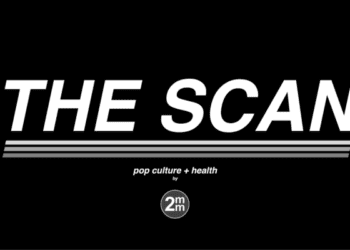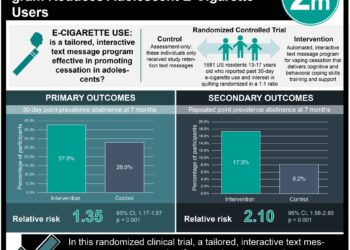Type of e-cigarette impacts risk of subsequent cigarette smoking
1. Among those surveyed, individuals who reported using modifiable e-cigarettes, known as “mods,” smoked more than 6 times as many cigarettes at follow up than those who endorsed the use of non-modifiable vaping “pens.”
2. Recent e-cigarette users smoked more than 5 times as many cigarettes at follow-up as those who had never used e-cigarettes.
Evidence Rating Level: 2 (Good)
Study Rundown: Recent data have shown that e-cigarette use or “vaping” in high school students has been increasing at an alarming rate, and that those who vape are more likely to subsequently smoke combustible cigarettes. Despite this prior work, there is little known about whether the specific e-cigarette delivery device impacts subsequent cigarette usage. This study attempted to elucidate risk factors for transitioning from vaping to cigarette smoking, with a focus on e-cigarette characteristics and delivery systems. Participants were surveyed regarding their historical use of e-cigarettes and combustible cigarettes and underwent follow-up 1 year later. Those who reported vaping at baseline were more likely to smoke cigarettes at follow-up. Compared to the e-cigarette “pen,” use of a “mod” device (which enables a user to modify temperature, amount of nicotine delivered, and size of vape cloud) was associated with reported increased cigarettes smoked in the past 30 days at the 1 year follow-up. Nicotine levels in e-liquid used during vaping were not associated with subsequent frequency of cigarette smoking. Though limited by a lack of inclusion of information regarding popular pod-based e-cigarettes due to the timing of the surveys and potential lack of generalizability to younger adolescents (all participants were > 18 years of age), this study provides valuable data regarding possible targets for e-cigarette regulation. By aiming to decrease the number of adolescents who vape, there is the potential to reduce adolescents’ transition to combustible cigarette smoking.
Click to read the study, published today in Pediatrics
Relevant Reading: Notes from the field: use of electronic cigarettes and any tobacco product among middle and high school students – United States, 2011-2018
In-Depth [prospective cohort]: This study used data collected from the Southern California Children’s Health Study from 2015 – 2017. A total of 1312 participants were included in the analysis (52% female, 87% Hispanic or non-Hispanic white). Participants initially reported the age at which they first used e-cigarettes and how often they vaped in the past 30 days. Data regarding sex, ethnicity, and parental education were also collected. Follow-up data regarding number of cigarettes smoked in the last 30 days was obtained 1 year later. Nearly 37% (n = 484) of participants reported having ever vaped at baseline, with 10.5% (n = 138) having vaped in the past 30 days. At 1-year follow-up, the average number of cigarettes smoked in the past 30 days was higher in males, previous e-cigarette users, and those whose parents had some college or a college degree or higher. There were no differences in cigarettes smoked between race/ethnicity. Participants who reported using a modifiable device at baseline smoked an average of 5.11 times as many cigarettes in the past 30 days at 1-year follow-up compared to those who used pen-like devices at baseline (95% CI 1.74-15.0). “Mod” users also smoked 8.38 times as many cigarettes in the past 30 days at follow-up compared to those who had never vaped at baseline (95% CI 4.87-14.4), whereas pen-like device users smoked 2.83 times as many cigarettes as those who had never vaped at baseline (95% CI 1.26-6.35).
Image: PD
©2020 2 Minute Medicine, Inc. All rights reserved. No works may be reproduced without expressed written consent from 2 Minute Medicine, Inc. Inquire about licensing here. No article should be construed as medical advice and is not intended as such by the authors or by 2 Minute Medicine, Inc.






